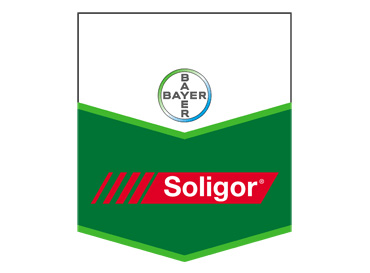

Features:
PRODUCT GROUP
EFFECTIVE SUBSTANCE
FORMULATION
PACKING TYPES
|
Plant Name |
Disease Name |
Usage Dose and Period |
Time Between Last Spraying and Harvest (Days) |
|
Wheat |
Brown rust (Puccinia recondita tritici) |
80 ml/da |
49 |
| Wheat |
Septoria (Septoria tritici) |
||
| Wheat |
Grain Ashing (Erysiphe graminis) |
||
| Wheat |
Yellow Rust (Puccinia striiformis) |
RECOMMENDATIONS FOR PLANTS
Spraying is started when the first signs of disease are seen against the diseases of sepia and rust in wheat. Depending on the course of the disease, spraying is repeated with an interval of 15-20 days if necessary. It can be used from the time of sapling to the spike, when the risk of disease occurs.
Septorian disease
Septoria disease in wheat appears as small, irregular, reddish-brown spots on the leaf. Then these spots expand and merge and cause the leaf to dry. The optimum temperature for the development of the disease is 20-25 degrees. However, the causative agent can work between 5-35 degrees. For this reason, wheat is under the threat of disease from the brooding period to the flag leaf period. Therefore, it is very important that the fungicide used against leaf diseases in wheat also has an effect on Septoria.
Rust disease
Rust diseases in wheat begin to appear in spring when the air temperature is 10-15 degrees. For this reason, it usually appears after Septoria. Similar to machine sewing, tassels are formed on the upper surface of the leaves. Temperature and humidity are important in the formation of infections. It can cause product loss between 12-75% depending on variety sensitivity and disease severity. For this reason, when the symptoms of the disease begin to appear, fungicide should be applied as a preservative. The prepared mixture should be applied in a windless way and the entire plant gets wet during the cool hours of the day.
MIXTURE STATUS
It can be mixed with Decis EC 2.5. If it is desired to be mixed with other drugs, a premix test should be done.
PREPARATION AND USE OF THE DRUG
The required amount of medicine is first mixed with a small amount of water in a separate container. This mixture is transferred to the half-filled sprayer tank. The required amount of water is added by mixing. The prepared mixture should be applied in a windless way and the entire plant gets wet during the cool hours of the day.
RESISTANCE MANAGEMENT
The plant protection product named Soligor EC 425 is a fungicide classified as Group G1 and G2 according to its mechanism of action. Repeated applications of plant protection products with the same mechanism of action promote resistance development. Therefore, in order to delay the development of resistance, do not exceed the total number of applications of Soligor EC 425 recommended during the same production season. In cases where the application should be repeated, pay attention to the use of plant protection products with different mechanism of action (except for Group G1 and G2).
ANTIDOTE AND TREATMENT
It has no special antidote. Symptomatic therapy should be applied.
Sosyal Ağ